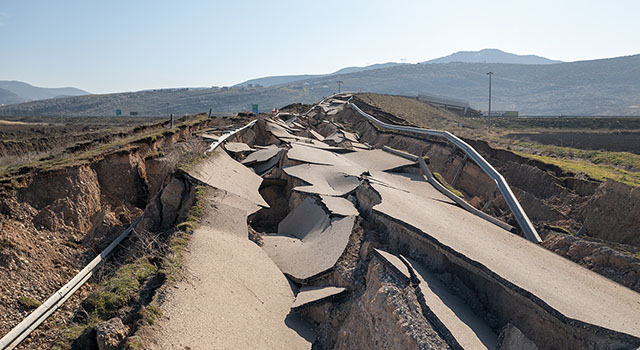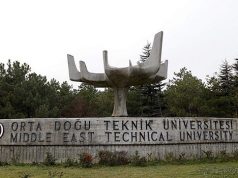
The article titled “Surface Deformations of the 6 February 2023 Earthquake Sequence, Eastern Türkiye,” in which Prof. Dr. Erdin Bozkurt from the Department of Geological Engineering at METU is among the authors, was published in the latest issue of the prestigious scientific journal Science Magazine dated January 19, 2024.
In the article focusing on the severe earthquakes that occurred in the southeastern region of Turkey on February 6, 2023, it is stated that the first rupture took place in the northern end of the Dead Sea Transform Fault, known in the field as the Narlı Fault. According to the study, the largest displacement and energy release in these earthquakes occurred 24 seconds later when the rupture moved northward and triggered the East Anatolian Fault Zone, which has been accumulating stress for centuries. Due to the bidirectional nature of the rupture, the first earthquake with a magnitude of 7.8 Mw activated the entire East Anatolian Fault Zone. Approximately 9 hours after the initial earthquake that took place early in the morning, a second major earthquake with a magnitude of 7.5 Mw occurred on the east-west trending Çardak-Sürgü Fault. The article suggests that these two consecutive earthquakes indicate a causal relationship.

The authors of the article emphasize that major earthquakes taking place in densely populated areas have resulted in significant loss of life and economic damage throughout human history. The article underlines the importance of data to be obtained through immediate observations in the epicenter and surrounding areas of earthquakes on land. However, it is mentioned that these observation efforts tend to be hindered or quickly disrupted due to various reasons. Among these reasons are the repair of damaged infrastructure, rescue and recovery operations, the threat of powerful aftershocks, difficulties in reaching the areas to be examined, and the rapid erosion of fault scarps.
The 5-week long fieldwork provides a crucial database
Despite all challenges, the surface rupture at the epicenter was reached a few days after the earthquakes as part of the conducted studies. In addition to the surface rupture, a detailed map of the displacements along the slip lines on fault places and newly formed fault traces was completed. Furthermore, a highly detailed depiction of surface deformations caused by the earthquake was obtained. This article documents the fieldwork, observations, and data obtained over a period of approximately 5 weeks following the earthquake, utilizing drone images and on-site investigations. Additionally, this study presents a significant database regarding surface deformations during the earthquakes along strike-slip faults on a continental scale, the mechanisms of rupture propagation, and how movement is transferred among complex fault systems. The article also introduces a new approach to understanding the displacement along related fault systems and global plate movements.
“The February 6 earthquakes occurred as a predicted natural event”
 The article highlights that the earthquakes that took place on February 6, 2023, were actually a previously predicted natural event. It is mentioned that TMMOB (Union of Chambers of Turkish Engineers and Architects) Chamber of Geological Engineers and its member geological engineers had previously warned about the high probability of a major earthquake caused by the East Anatolian Fault in the near future. This warning had been reiterated on numerous occasions, especially after the earthquake in Elazığ on January 24, 2020. The data and interpretations included in this study provide information that will contribute to a better understanding of earthquakes and the faults that cause them as the information is presented in a rather simple language that can be understood by both geology experts and the general public.
The article highlights that the earthquakes that took place on February 6, 2023, were actually a previously predicted natural event. It is mentioned that TMMOB (Union of Chambers of Turkish Engineers and Architects) Chamber of Geological Engineers and its member geological engineers had previously warned about the high probability of a major earthquake caused by the East Anatolian Fault in the near future. This warning had been reiterated on numerous occasions, especially after the earthquake in Elazığ on January 24, 2020. The data and interpretations included in this study provide information that will contribute to a better understanding of earthquakes and the faults that cause them as the information is presented in a rather simple language that can be understood by both geology experts and the general public.
The article, authored by Prof. Dr. Erdin Bozkurt from METU, along with Prof. Dr. Mehmet Nuri Bodur from Hakkari University, Walter D. Mooney from the US Geological Survey, and Jiannan Meng, Timothy Kusky, and Lu Wang from China University of Geosciences, can be accessed at https://www.science.org/doi/10.1126/science.adj3770.







